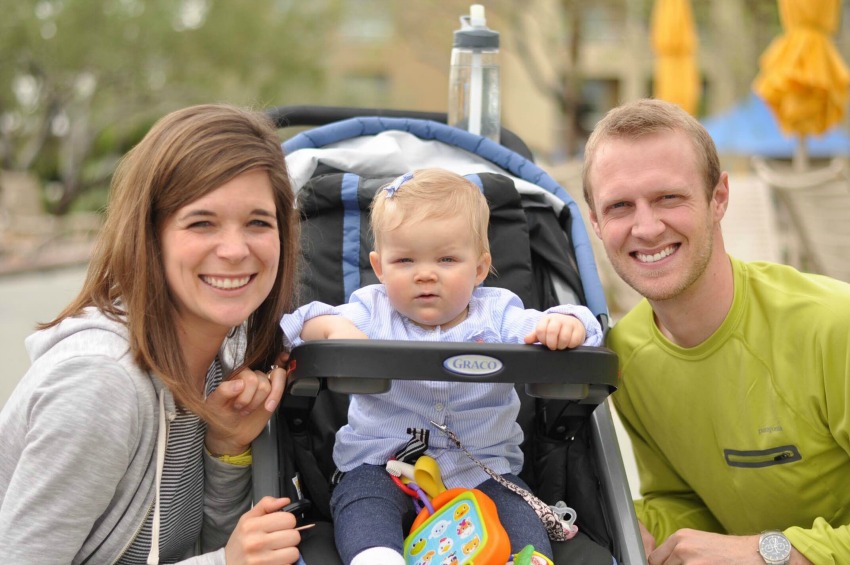Hello! I’m Brooke Foley.
As a physical therapist, I have the privilege of treating women who are pregnant – and these patients have taken a soft spot in my heart since becoming a mom last year. Women frankly talk with me about their growing bellies, aches and pains, and concerns about the loss of their core and a growing separation they begin to see in their abdomen. Amber’s a dear childhood and lifelong friend of mine. When she asked me to share some thoughts about this topic, I jumped at the opportunity. It’s my hope this serves as a tool and resource for you or a friend!
Let’s talk about Diastasis Rectus Abdominus.
First the basics.
- Think about your core as a canister. The diaphragm is the lid, the pelvic floor the base, and the transversus abdominus (TA) serves as the sides. The TA is the innermost abdominal muscle and wraps around you like a corset attaching to your lower back – making it an important stabilizer during life – both pregnant and non-pregnant life!
- Your obliques (internal & external) and rectus abdominus (RA) lie on top of the TA and often take the forefront during our exercise – especially the RA as the most superficial and “six-pack muscle”. Unfortunately a strong six-pack says nothing about our core stability. It’s the TA that counts!
- There are two sides of the RA extending from your pubic crest/symphysis up to ribs five through seven. These two sides meet in the middle via a thick connective tissue called the linea alba.
- As your uterus expands during pregnancy, the linea alba can stretch and weaken causing a separation (diastasis) between the two sides of your RA. This is common in the 2nd and 3rd trimesters when you are growing most rapidly and is called Diastasis Rectus Abdominus (DRA).
Who is most susceptible?
- Although this can happen to anyone, pregnant women are most susceptible. Especially those experiencing a 2nd+ pregnancy, multiple gestation, have had a cesarean section or are over 35 years of age.
Can I prevent DRA?
- Unfortunately, no. This is just a natural part of pregnancy growth in some women. However we know that postural strengthening and staying active are key components to quicker recovery post-partum as well as less pain throughout pregnancy.
Is DRA harmful?
- Some women with DRA are entirely asymptomatic, and it resolves on its own after giving birth.
- However it is not uncommon for DRA to be accompanied by lower back/pelvic/hip pain, difficulty breathing (especially exhalation), and pelvic floor dysfunction (incontinence, constipation, pain with intercourse, etc).
What is the role of a physical therapist?
- We evaluate and treat all of the above! Most insurance companies provide coverage for physical therapy – take advantage. The earlier you intervene, the better. Usually you don’t need a doctor’s referral to see a PT – but with regular trips to your OB, it’s simple to ask for an order too.
- We can also fit you with an abdominal brace to assist with stability.
Tips & Tricks
- Stretch your low back and hips.
- Target your TA during abdominal strengthening – pictured below are my four favorite moves. Pay attention to the coordination of breathing and “turning on” the right muscles – often our butt muscles will kick in when we’re just supposed to contract our pelvic floor (like preventing urination). Gaining control is key – and takes some “retraining”.
- Avoid over-exerting yourself. Any activity or exercise that causes your tummy to “bulge” through the diastasis should be avoided. As the diastasis slowly begins to close, you can return to your other abdominal exercises.
Take heart! If you start to notice DRA, don’t be alarmed. This is often a very normal part of pregnancy and won’t begin to resolve until after you’ve delivered your baby. However, taking a proactive approach before and during pregnancy toward better core stability will make your recovery easier and faster – which is quite desirable!
XOXO,
Brooke
A huge thanks for sharing today, Brooke! It is an absolute blessing to learn from a professional about this important topic!
Here’s a little more about my dear friend:
Brooke graduated from Bethel University with a degree in Psychology in 2009 and then Mayo School of Health Sciences in Rochester, MN with a Doctorate in Physical Therapy in 2012. Although she primarily does outpatient neurological rehabilitation, she also sees her fair share of women’s health and enjoys a part time work schedule now that her sweet Caroline is here. She and her husband, Devin, live in Rapid City, SD in the beautiful Black Hills but often miss their Minnesota roots!
As always, please follow Mommy’s Me Time on Facebook and Instagram (@mommysmetime) for daily real life encouragement!




1 Comment
[…] this made my day – unbedingt anschauen! / Must see for moms!! What a physical therapist recommends for moms with diastasis recti 5 ways my kid is my personal trainer Wie war deine Woche?? / How was your […]